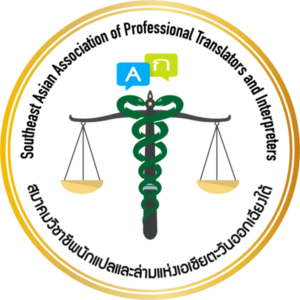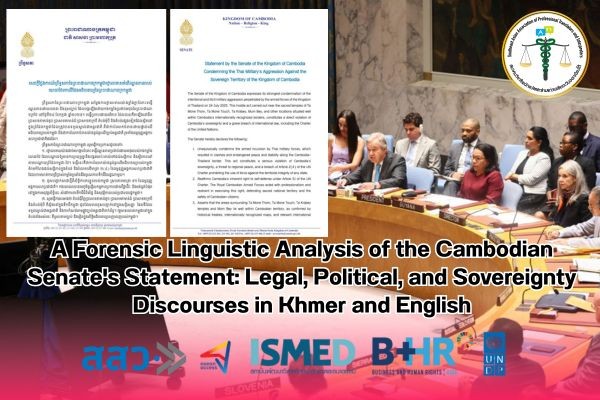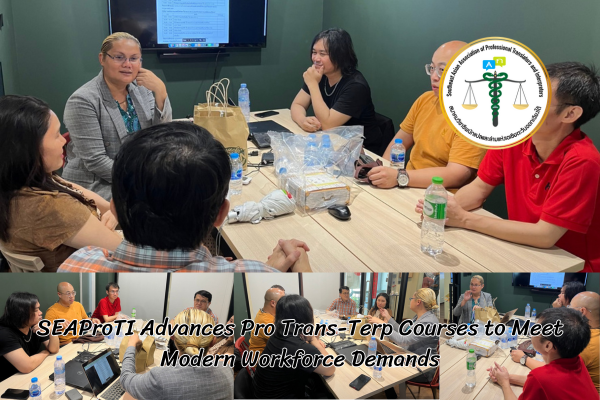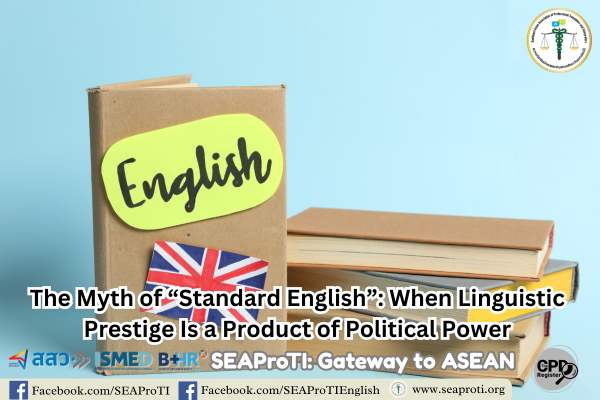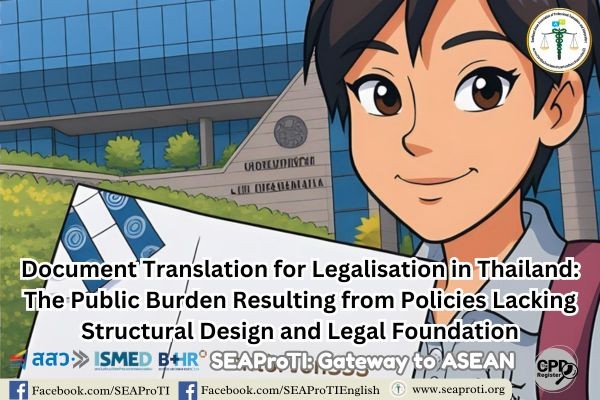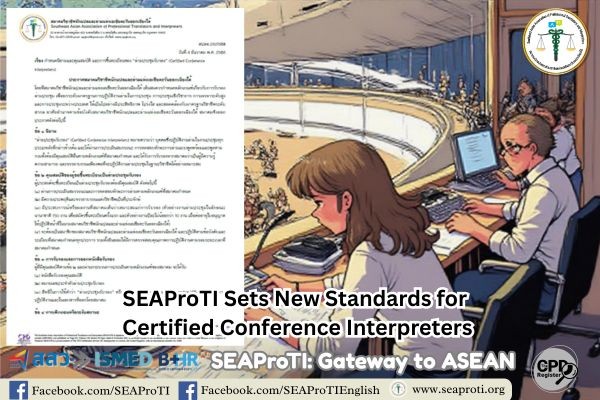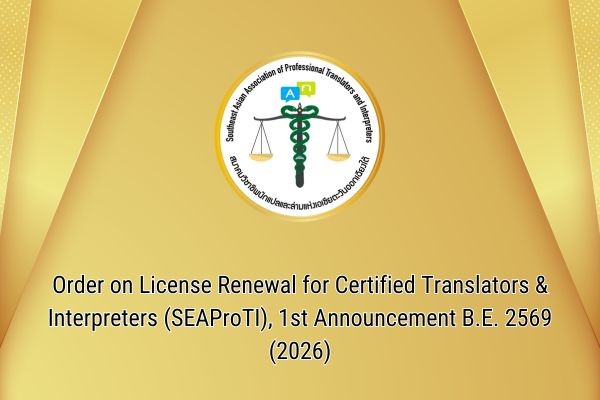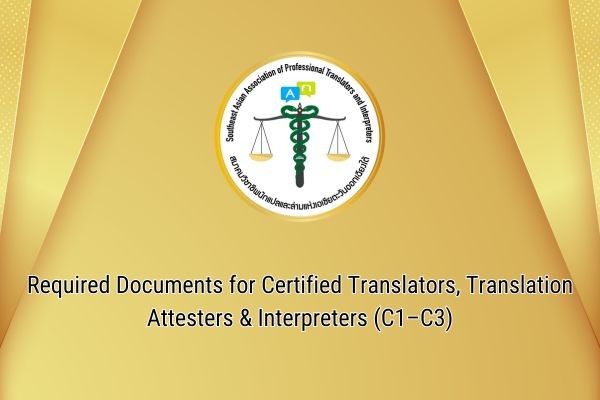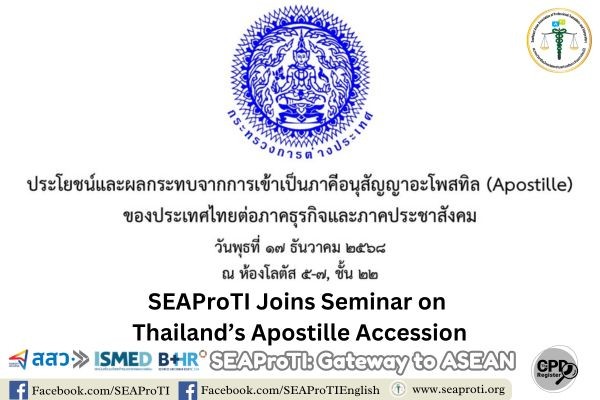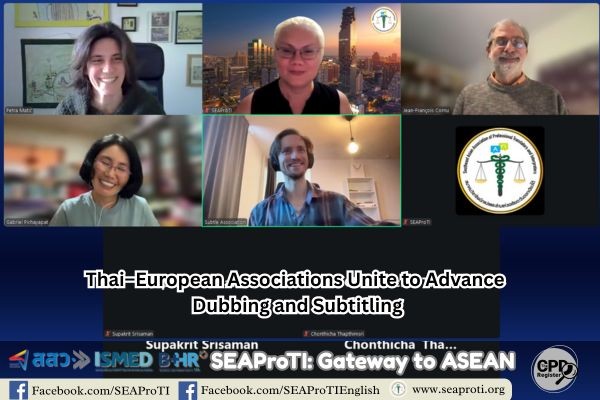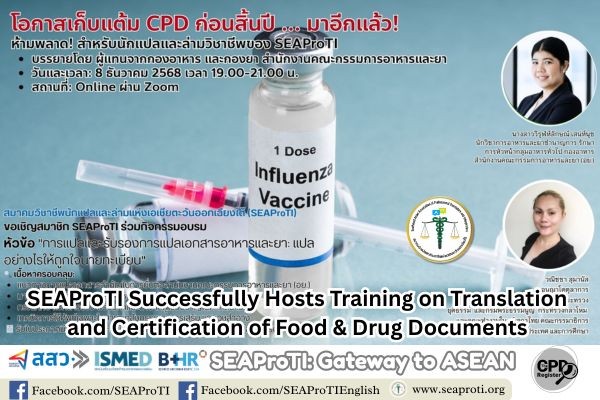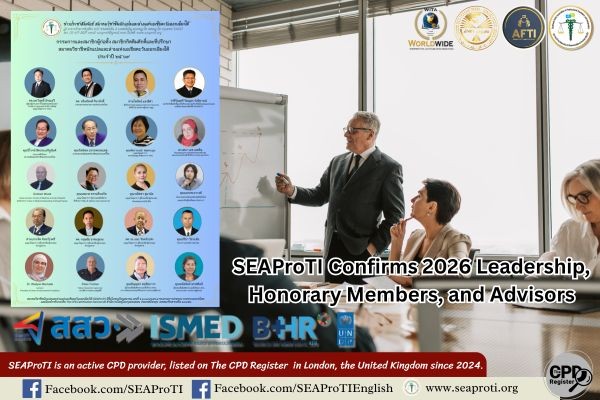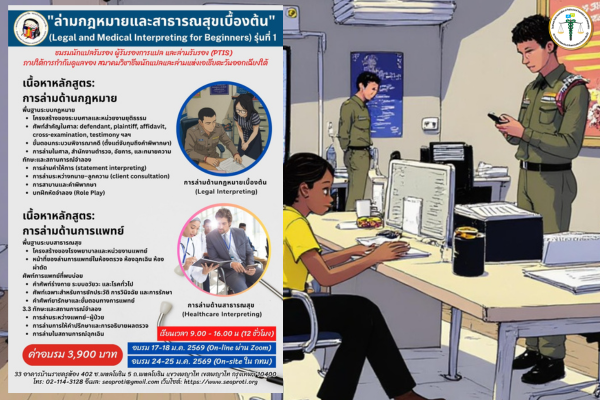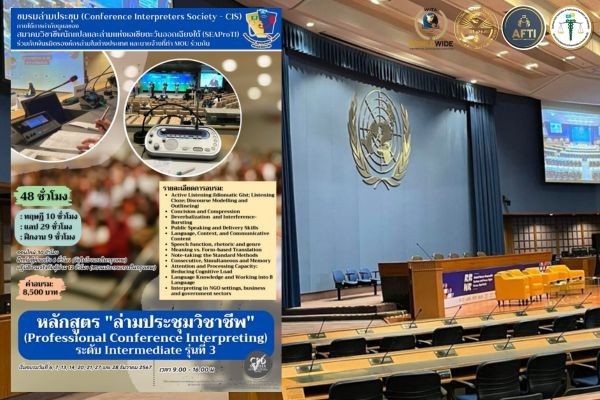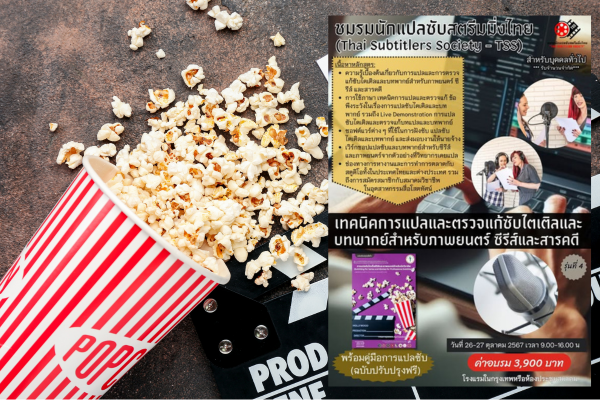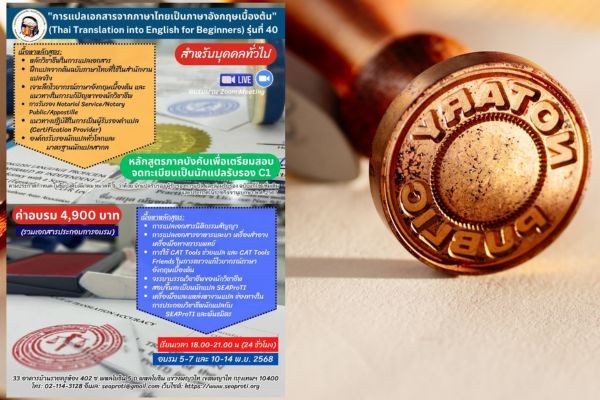A Forensic Linguistic Analysis of the Cambodian Senate’s Statement:
Legal, Political, and Sovereignty Discourses in Khmer and English
By Wanitcha Sumanas, President of the Southeast Asian Association of Professional Translators and Interpreters (SEAProTI) and Forensic Linguist, acting on behalf of SEAProTI.
25 July 2025, Bangkok – In response to the border conflict between the Kingdom of Cambodia and the Kingdom of Thailand on 24 July 2025, the Senate of Cambodia issued an official statement in both Khmer and English. This dual-language communiqué serves not only as a condemnation of Thailand’s military actions but also as a strategic use of legal and political discourse to assert Cambodia’s territorial sovereignty. This article applies forensic linguistic analysis to identify the discourse strategies employed in both versions and explores their implications for international diplomacy, particularly within the United Nations Security Council (UNSC).
1. Sovereignty Discourse in the Statement
Both versions of the statement utilize sovereignty discourse to reaffirm Cambodia’s legal and historical claims over the disputed territory. Specific mention of geographical sites, such as Ta Mone Thom, Ta Mone Touch, and Ta Krabey, serves to “legalize geography,” embedding these locations within a framework of rightful ownership (Fairclough, 2003; Blommaert, 2005).
Terms such as “aggression,” “incursion,” and “grave violation” are drawn from international legal lexicons, positioning Cambodia not merely as a party to a dispute but as a lawful actor under threat. This strategic vocabulary creates a narrative of legitimacy in international legal forums.
2. Invoking International Law to Bolster Claims
The citation of Articles 2(4) and 51 of the United Nations Charter in both Khmer and English serves as a quasi-legal argument, not a formal legal submission, but a discursive foundation intended to legitimize Cambodia’s position in the eyes of the international community (Chilton & Schäffner, 2002). This framing paves the way for potential proceedings at the International Court of Justice (ICJ) or diplomatic engagements at the UNSC.
By embedding legal references, the statement preemptively constructs a narrative of lawful self-defense, appealing to global norms and fostering alignment with established international legal standards (Gibbons, 2003).
3. Rhetorical and Linguistic Strategies
The Khmer version features long, repetitive sentence structures and emotionally charged terms, particularly the repeated use of phrases like “military aggression,” to emphasize moral and legal outrage. This reflects a rhetorical intent aimed at domestic audiences for internal legitimation (Tannen, 2007).
The English version employs passive constructions (e.g., “was perpetrated,” “has been confirmed”) to craft an objective tone while subtly framing Thailand as the aggressor. Such choices increase legal clarity and lend formality to the narrative (Halliday & Matthiessen, 2014).
Additionally, references to “the wise and visionary leadership of Samdech Techo” contribute to the political legitimization of national leaders—a common feature in state-sponsored discourse from authoritarian or semi-authoritarian regimes (Wodak, 2009).
4. Comparative Forensic Linguistic Observations
| Aspect | Khmer Version | English Version |
|---|---|---|
| Primary Purpose | To condemn Thai aggression and assert sovereignty | To appeal to international audiences and garner diplomatic support |
| Intended Audience | Cambodian public, domestic media | UN, ASEAN, international media, diplomatic allies |
| Tone | Emotional, assertive, repetitive structures | Formal, restrained, but legally forceful |
| Main Strategy | Descriptive narrative, historical references | Legal precision, quasi-judicial framing |
Notably, the Khmer text contains extensive repetition of geographic details and incident narratives, reinforcing nationalistic sentiment. The English version, by contrast, distills content into a concise and legally coherent format suitable for international diplomacy.
5. Implications for UNSC Diplomacy
From a forensic linguistic perspective, the statement’s framing has direct implications for how the issue may be perceived and debated at the UNSC:
- Defensive Actor Framing: By invoking Article 51 of the UN Charter, Cambodia positions itself as a sovereign state exercising its right to self-defense, which can influence how UNSC members view any potential resolution or response.
- Legality and Normative Alignment: The legal discourse invites alignment from states that uphold international norms, increasing the likelihood of support for Cambodia’s claims or requests for mediation.
- Political Legitimacy of Leadership: The explicit praise of Cambodian leaders reinforces internal stability while signaling to external actors that Cambodia has strong, unified governance, potentially influencing UNSC members to engage with Cambodian leadership in good faith.
- Discursive Precedent: This strategic communication builds a record of claims, forming a foundation for future legal or diplomatic negotiations. It effectively prepares the UNSC arena for Cambodia’s preferred narrative.
Conclusion
The Cambodian Senate’s bilingual statement is a linguistically and legally strategic document that employs discourse to construct legitimacy, assert sovereignty, and appeal to global institutions. Through legal framing, rhetorical positioning, and political messaging, Cambodia situates itself as a lawful actor defending its rights, both in the eyes of its citizens and the international community. This forensic linguistic analysis reveals how language is not only a tool of communication but a mechanism of power in international conflict and diplomacy.
References
- Blommaert, J. (2005). Discourse: A Critical Introduction. Cambridge University Press.
- Chilton, P., & Schäffner, C. (2002). Politics as Text and Talk: Analytic Approaches to Political Discourse. John Benjamins.
- Fairclough, N. (2003). Analysing Discourse: Textual Analysis for Social Research. Routledge.
- Gibbons, J. (2003). Forensic Linguistics: An Introduction to Language in the Justice System. Blackwell Publishing.
- Halliday, M. A. K., & Matthiessen, C. (2014). Halliday’s Introduction to Functional Grammar (4th ed.). Routledge.
- Tannen, D. (2007). Talking Voices: Repetition, Dialogue, and Imagery in Conversational Discourse. Cambridge University Press.
- Wodak, R. (2009). The Discourse of Politics in Action: Politics as Usual. Palgrave Macmillan.
SEAProTI’s certified translators, translation certification providers, and certified interpreters:
The Southeast Asian Association of Professional Translators and Interpreters (SEAProTI) has officially announced the criteria and qualifications for individuals to register as “Certified Translators,” “Translation Certification Providers,” and “Certified Interpreters” under the association’s regulations. These guidelines are detailed in Sections 9 and 10 of the Royal Thai Government Gazette, issued by the Secretariat of the Cabinet under the Office of the Prime Minister of the Kingdom of Thailand, dated July 25, 2024, Volume 141, Part 66 Ng, Page 100. The Royal Thai Government Gazette
การวิเคราะห์ถ้อยแถลงของวุฒิสภากัมพูชาผ่านมุมมองนิติภาษาศาสตร์:
กลยุทธ์ทางภาษากฎหมาย การเมือง และอำนาจอธิปไตย
โดย วณิชชา สุมานัส นายกสมาคมวิชาชีพนักแปลและล่ามแห่งเอเชียตะวันออกเฉียงใต้ (SEAProTI) และนักนิติภาษาศาสตร์ ปฏิบัติหน้าที่ในนามสมาคม SEAProTI
25 กรกฎาคม 2568, กรุงเทพมหานคร – ในบริบทของความขัดแย้งชายแดนระหว่างราชอาณาจักรกัมพูชาและราชอาณาจักรไทย เมื่อวันที่ 24 กรกฎาคม 2025 วุฒิสภากัมพูชาได้ออกถ้อยแถลงทั้งในภาษาเขมรและภาษาอังกฤษ เพื่อประณามการกระทำของไทยในพื้นที่ชายแดน โดยอาศัยกลยุทธ์ทางวาทกรรมและภาษากฎหมายเพื่อยืนยันสิทธิอธิปไตยของตน บทความนี้จะวิเคราะห์ถ้อยแถลงดังกล่าวผ่านมุมมองนิติภาษาศาสตร์ (forensic linguistics) โดยเฉพาะในด้านวาทกรรมอธิปไตย (sovereignty discourse), การใช้กลไกทางกฎหมายระหว่างประเทศ และกลยุทธ์การโน้มน้าวทางภาษา พร้อมทั้งอภิปรายถึงผลกระทบของวาทกรรมเหล่านี้ต่อการเจรจาในเวทีคณะมนตรีความมั่นคงแห่งสหประชาชาติ (UNSC)
1. วาทกรรมอธิปไตยในถ้อยแถลง
ถ้อยแถลงทั้งสองฉบับมีลักษณะของ วาทกรรมอธิปไตย อย่างชัดเจน โดยการระบุชื่อสถานที่อย่างเป็นทางการ เช่น “Ta Mone Thom,” “Ta Krabey,” “Phra Tamarn Thom,” ล้วนเป็นการ “ทำให้พื้นที่กลายเป็นกฎหมาย” (legalization of geography) โดยสื่อถึงการมีสิทธิชอบธรรมในการถือครองดินแดนตามหลักประวัติศาสตร์และกฎหมายระหว่างประเทศ (Fairclough, 2003; Blommaert, 2005)
คำศัพท์เชิงกฎหมายอย่าง “aggression,” “incursion,” “grave violation” ถูกใช้เพื่อ framing ไทยในฐานะผู้รุกราน ในขณะที่ framing ตนเองเป็นเหยื่อ (victim discourse) ผ่านวลีเช่น “Cambodia has the right to self-defense” ซึ่งเป็นกลยุทธ์ที่ปรากฏซ้ำในถ้อยแถลงเพื่อสื่อถึงสถานะผู้ถูกกระทำโดยสุจริต
2. การใช้กฎหมายระหว่างประเทศเป็นฐานของข้อเรียกร้อง
การอ้างถึงมาตรา 2(4) และมาตรา 51 แห่งกฎบัตรสหประชาชาติ (UN Charter) เป็นการให้ “สถานะกึ่งกฎหมาย” (quasi-legal status) แก่ถ้อยแถลง ซึ่งแม้จะไม่ใช่เอกสารที่มีผลทางกฎหมายโดยตรง แต่ช่วยวางรากฐานทางวาทกรรม (discursive groundwork) หากกัมพูชาต้องนำเรื่องเข้าสู่การพิจารณาของศาลยุติธรรมระหว่างประเทศ (ICJ) หรือ UNSC (Chilton & Schäffner, 2002)
ยิ่งไปกว่านั้น วาทกรรมนี้ยังเป็นการ pre-emptive legal argument โดยใช้ภาษาในการกำหนดกรอบการตีความต่อข้อพิพาท และเปิดทางให้ประชาคมโลก “เห็นพ้อง” กับข้ออ้างเรื่องอธิปไตยของกัมพูชา (Gibbons, 2003)
3. กลยุทธ์ทางภาษาการโน้มน้าว
ภาษาเขมรในถ้อยแถลงมีลักษณะเน้นย้ำซ้ำคำสำคัญ เช่น การใช้คำว่า “ប្រឆាំងយោធា” (การรุกรานทางทหาร) ซ้ำหลายครั้ง พร้อมโครงสร้างประโยคยาวเพื่อสะสมพลังของอารมณ์และความชอบธรรม (Tannen, 2007)
ในภาษาอังกฤษ กลยุทธ์ที่โดดเด่นคือการใช้ passive voice เช่น “was perpetrated,” “has been confirmed” ซึ่งมีลักษณะ impersonal และเป็นทางการ เหมาะแก่การสื่อสารในเวทีระหว่างประเทศ เพื่อให้ดูเป็นกลางและมีลักษณะ objectivity ในขณะที่ยังคง framing ไทยเป็นฝ่ายกระทำผิดอย่างชัดเจน (Halliday & Matthiessen, 2014)
นอกจากนี้ การใช้วลี “wise and visionary leadership of Samdech Techo” ยังเป็นการสถาปนาความชอบธรรมทางการเมือง (political legitimacy) ผ่านภาษา ซึ่งมักพบในวาทกรรมรัฐนิยมของรัฐอำนาจนิยม (Wodak, 2009)
4. การเปรียบเทียบระหว่างฉบับภาษาเขมรและภาษาอังกฤษ
| ประเด็น | ภาษาเขมร | ภาษาอังกฤษ |
|---|---|---|
| วัตถุประสงค์หลัก | สื่อสารภายใน ยืนยันสิทธิ์อธิปไตย | สื่อสารกับประชาคมโลก |
| โทนภาษา | อารมณ์เข้มข้น ใช้คำซ้ำ | เป็นทางการ ใช้ศัพท์กฎหมายชัดเจน |
| กลยุทธ์หลัก | อธิบายเหตุการณ์แบบละเอียด | เน้นกฎหมายระหว่างประเทศ |
| framing | Cambodia = victim | Cambodia = victim with legal rights |
ข้อสังเกตเชิงนิติภาษาศาสตร์เพิ่มเติม คือ ฉบับภาษาเขมรมีการอธิบายรายละเอียดเชิงภูมิศาสตร์และพฤติกรรมของอีกฝ่ายอย่างต่อเนื่อง แสดงถึงจุดมุ่งหมายหลักในการโน้มน้าวประชาชนภายในประเทศ (internal legitimisation) ขณะที่ฉบับภาษาอังกฤษลดทอนรายละเอียดและเพิ่มความกระชับ เพื่อให้เข้าใจง่ายและสร้างผลทางกฎหมายและการทูตมากกว่า
5. ผลของวาทกรรมต่อเวที UNSC
ในมุมของนิติภาษาศาสตร์ วาทกรรมที่ถ้อยแถลงนำเสนอมีผลกระทบโดยตรงต่อการ framing ประเด็นใน UNSC ดังนี้:
- การให้ภาพกัมพูชาเป็นผู้ถูกกระทำตามสิทธิ (defensive actor) สอดคล้องกับมาตรา 51 แห่งกฎบัตรสหประชาชาติ ซึ่งอาจทำให้สมาชิก UNSC พิจารณาไม่ว่ากัมพูชาจะละเมิดกฎหมายระหว่างประเทศ
- การใช้วาทกรรมทางกฎหมายช่วยให้ข้อเรียกร้องของกัมพูชาดูมีน้ำหนัก และชอบธรรม ต่อการตั้งกระทู้ใน UNSC และอาจนำไปสู่การออกมติหรือแถลงการณ์ร่วม
- การแสดงภาวะผู้นำที่มั่นคงของผู้นำกัมพูชา ผ่านถ้อยคำ เช่น “wise leadership” มีผลทางอ้อมต่อความชอบธรรมของรัฐบาลในสายตานานาชาติ โดยเฉพาะในกรณีที่ UNSC พิจารณาข้อเสนอให้ตั้งคณะผู้สังเกตการณ์หรือเปิดเวทีเจรจา
บทสรุป
วุฒิสภากัมพูชาใช้ถ้อยแถลงอย่างมีกลยุทธ์ โดยอาศัยวาทกรรมทางกฎหมายและอธิปไตยเพื่อเสริมสร้างความชอบธรรมของตนในข้อพิพาทชายแดนกับไทย ทั้งในระดับภายในประเทศและเวทีระหว่างประเทศ การใช้ภาษากฎหมายระหว่างประเทศ การ framing ตัวเองเป็นเหยื่อ และการเสริมความชอบธรรมของผู้นำ ล้วนมีผลต่อการสร้างบริบททางวาทกรรม (discursive context) ที่พร้อมต่อการนำเข้าสู่การเจรจาใน UNSC
บรรณานุกรม
- Blommaert, J. (2005). Discourse: A Critical Introduction. Cambridge University Press.
- Chilton, P., & Schäffner, C. (2002). Politics as Text and Talk: Analytic Approaches to Political Discourse. John Benjamins.
- Fairclough, N. (2003). Analysing Discourse: Textual Analysis for Social Research. Routledge.
- Gibbons, J. (2003). Forensic Linguistics: An Introduction to Language in the Justice System. Blackwell Publishing.
- Halliday, M. A. K., & Matthiessen, C. (2014). Halliday’s Introduction to Functional Grammar (4th ed.). Routledge.
- Tannen, D. (2007). Talking Voices: Repetition, Dialogue, and Imagery in Conversational Discourse. Cambridge University Press.
- Wodak, R. (2009). The Discourse of Politics in Action: Politics as Usual. Palgrave Macmillan.
เกี่ยวกับนักแปลรับรอง ผู้รับรองการแปล และล่ามรับรองของสมาคมวิชาชีพนักแปลและล่ามแห่งเอเชียตะวันออกเฉียงใต้
สมาคมวิชาชีพนักแปลและล่ามแห่งเอเชียตะวันออกเฉียงใต้ (SEAProTI) ได้ประกาศหลักเกณฑ์และคุณสมบัติผู้ที่ขึ้นทะเบียนเป็น “นักแปลรับรอง (Certified Translators) และผู้รับรองการแปล (Translation Certification Providers) และล่ามรับรอง (Certified Interpreters)” ของสมาคม หมวดที่ 9 และหมวดที่ 10 ในราชกิจจานุเบกษา ของสำนักเลขาธิการคณะรัฐมนตรี ในสำนักนายกรัฐมนตรี แห่งราชอาณาจักรไทย ลงวันที่ 25 ก.ค. 2567 เล่มที่ 141 ตอนที่ 66 ง หน้า 100 อ่านฉบับเต็มได้ที่: นักแปลรับรอง ผู้รับรองการแปล และล่ามรับรอง

